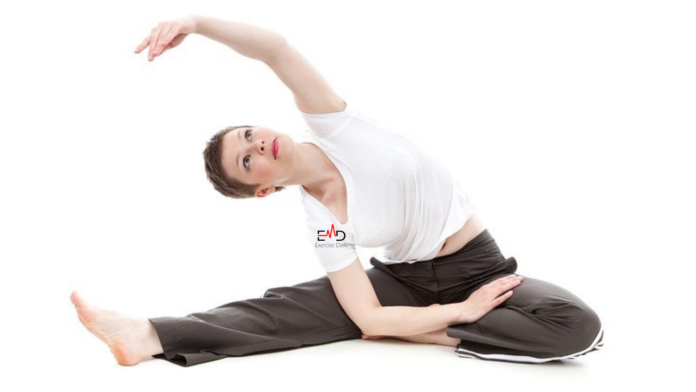Table of Contents
Why is the arms circle considered a dangerous stretching exercise? If stretching is a coin, then the other dark side of it hides in plain sight. Positive effects of stretching are noted in every exercise-related discussion.
But it is the side effects of stretching that remain hidden from us. Our lifestyle is getting more and more passive with each passing day. It would not be wrong to call it the generation of couch potatoes.
In this dilemma, it would be ironic to talk about the harmful effects of stretching. However, the purpose of this article is to create awareness about the potential harms and benefits of extension and particularly the arm circles.
Hopefully, by the end of this article, you will get the answer to “Why are arms circles considered a dangerous stretching exercise?”
IMPORTANCE OF STRETCHING
A rock statue big, heavy and bulky is incapable of any motion. He, who is all brawn, no brains, and stiff, is nothing more than a rock statue. What is the point of all those muscles if the range of motion is limited?
If your muscles are not flexible, then there is no sense in adding stiff muscle mass. The flexibility of the muscles is also a criterion for checking fitness.
Stretching is one way to make muscles flexible, but not all stretching exercise are beneficial and, in this article, I will break down Why are arms circle considered a dangerous stretching exercise.
Make stretching your daily habit
Remember that neck strain you felt one morning? Or that hamstring injury that made walking a pain below the ass. If stretching were a part of your life, then you would not have gone through all that pain and discomfort.
- Stretching is the simplest thing you can do for the health of your muscles. Some of the factors that determine your muscles’ health are their range of motion, flexibility, adaptability, and tension.
- Stretching relaxes the tight muscles and soft tissues such as ligaments and tendons, thereby increasing the range of motion.
- Stretching keeps the muscle fibres at an optimum length which allows muscles to adapt accordingly.
- Active use of a muscle in stretching increases the blood supply to that particular muscle, which supplies the necessary nutrients for its growth and development. It is one of the reasons why a post-workout stretch can be excellent for the body.
- Besides these general benefits of stretching, it is an athlete’s saviour. For an athlete or a sports enthusiast having a wide range of motion is crucial for good performance.
- The flexibility of the muscles, joint and other associated structures directly affect the range of motion, and as we have already established, stretching can help you achieve that.
- An athlete’s worst nightmare is having a muscles injury, which, if severe enough, can potentially dent their progress and career. Stretching can reduce the chances of muscle injury, but not all stretching exercise is worth it.
Before I explain, “why are arms circle considered a dangerous stretching exercise?” Let’s do some science!
MUSCLE CONTRACTION SCIENCE
Muscles give us mobility and for efficient locomotion, muscle fibres need to be at a suitable length. Anything more or less than that makes a power inefficient in doing its job.
The way stretching helps a stiff muscle is when you stretch muscles, you are pulling the fibres, lengthening them, and setting them at an optimum length to perform their function effectively.
TYPES OF STRETCHING
Stretching is a diverse topic, and many different types of stretching are common in the sports arena. Here I will present the basic idea of the three main types of extension.
STATIC STRETCHING
The most common and straightforward type of stretching is a static one. As the name static implies, this type of extension involves stretching the muscles to their limit and holding them at that position.
Though there is no rule of thumb as to how long the duration of stretch should be, the research suggests that a stretch sustained for at least 30 seconds can significantly increase flexibility and range of motion. Increasing the time of the stretch did little or no good.
Unless you are a professional athlete or a fitness freak, static exercise is sound for you as the benefits that come with little effort are uncountable.
We have all heard the advice that always stretches before a workout as it is an excellent way to warm up your muscles.
Contrary to this popular belief, static exercises are more effective in lowering the chances of an injury when used as a “cool-down” after strength training or any other rigorous activity.
DYNAMIC STRETCHING
Dynamic stretching is active, movement-based stretching. Unlike their static counterpart, the muscles in dynamic stretching go through a full range of motion and do not stay in one place for long.
Another thing that sets it apart from other forms of extension is the fact that they are sport-specific movements that help with your overall performance and decrease muscle stiffness.
They are so effective because they mimic the activity you are about to perform and prepare the muscles in advance.
Moreover, the blood flow to the muscle also increases as dynamic stretching increases your heart rate – although a little less dramatically than how dynamite would do it.
Their sport-specific feature allows you to be creative about them; you can create your dynamic stretching exercise or innovate the existing ones.
When It comes to which type of stretching is best for an average person, dynamic stretching tops the list. Lunges, squats, side shuffles, and leg swings are some of the examples of good dynamic stretching exercises.
Before you decide to go berserk or ballistic on dynamic stretching, keep in mind that research suggests that the intensity of dynamic stretching should vary according to the level of the person; it also should not cause any undue fatigue.
Whenever you start any new type of exercise or something, gradually work your way to the next level. There’s a reason why levels of the games are designed in a way that when the final boss wages war on you, you are all prepared to tackle him.
BALLISTIC STRETCHING
While dynamic stretching stretches a muscle to its limits, ballistic stretching goes one step further. It stretches the muscles beyond the normal range and that too in bouncy and jerky movements which results in a substantial increase in the risk.
This jerking movement can also kickstart something called stretch reflex which causes the muscles to tighten up instead of loosening. Ballistic stretching is really like a ballistic missile in the world of stretching.
Though a professional athlete may be able to withstand the intensity of the exercise, it is beyond the capabilities of an average person. For sports that demand a lot of running and flexibility, athletes can greatly benefit from ballistic stretching.
Few examples of such sports are football, soccer, and basketball where ballistic stretching can increase the athlete’s range of motion and ultimately performance.
However, if you are an average person struggling to stay in shape and flexible. Static or dynamic stretching is a better option for you.
They are easier and the risk of muscle injury is considerably less. Meanwhile, it will be wise to leave ballistic stretching to the professionals.
ARM CIRCLES
Arm circles fall under the category of dynamic stretching, which is, as the research shows, the most beneficial form of stretching. Many athletes incorporate arm circles in their warm-up routines, especially swimmers.
Here is a breakdown of what is going on in an arm circle: you fully extend your arms to the sides of your body, the way Leonardo di Caprio did in the movie titanic.
Now, once you get the feeling of Leonardo, you start drawing small, imaginary circles – and not Kate Winslet. You can also change your gears in the middle. If you started out making circles in the clockwise direction, then circle your arms backward after a moment.
There is no certain number of reps you have to follow, just listen to your body when it starts burning that would be your cue to stop.
The exercise mainly targets your shoulder muscles, namely deltoids. It also gets the blood moving in your arm muscles notably the biceps and triceps.
DANGERS OF ARM CIRCLES
This exercise is quite popular probably because of its rather unintimidating and portable nature as it can be done almost anywhere. But it is not all beneficial. There is a catch, as it is for most things in life.
Arm circles can lead to pain and shoulder impingement syndrome over time. Shoulder impingement syndrome is when the fluid-filled cavity around the shoulder joint swells and becomes inflamed. Pain due to this situation can even wake you up from deep sleep.
Although arm circles are a dynamic form of stretching, their significance in an athlete’s performance is still somewhat disputed.
Studies show that stretching exercises performed before any athletic activity actually decreased the performance output. And it does not stop here, stretching exercises, including arm circles, even increase the risk of muscle injury.
If arm circling poses such harm to professional athletes, then it follows that an average person is at a greater risk.
Doing arm circles properly or improperly will do an average person more harm than good. It can damage and injure the rotator cuff (shoulder) muscles.
Many variations of the standard arm circles exist, and the risk of injury varies with each of them. The one in which arm circles are done with carrying weights on each hand is more dangerous as it puts more stress on shoulder muscles against gravity.
ALTERNATIVE TO ARM CIRCLES
At this point, it should be clear as to “why are arms circle considered a dangerous stretching exercise?” But that does not mean that there are not any alternative ways to boost your shoulder muscles.
I have already mentioned some safe and easy-to-do stretching exercises in prior sections. But, if you are looking to replace the arms circle with some other exercise, lateral raise is the best alternative.
Lateral raise, or lat raise, is an upper body exercise, which primarily targets your deltoid muscles. Lateral raises strengthen the same deltoid muscles which were prone to injury in arm circles. Strengthened deltoids ensure the integrity of the shoulder joint and prevent injury.
A lateral raise is simple and can be performed with dumbbells, or a lateral raise machine. The use of cable pulleys is also quite common and effective. Following are the steps of the dumbbell version of lateral raise:
- Stand on your feet, of course, hip-distance apart.
- Pick a dumbbell for each hand, the weight of which depends upon your fitness level.
- Slowly raise the arm sideways and up to the shoulder level.
- Now, descend your arms back to the initial position, perpendicular to the floor.
You can adjust the number of reps and sets according to your fitness level. Normally, 3 sets of 10 reps are enough unless you plan to challenge Hercules.
TAKEAWAY
Why is an arms circle considered a dangerous stretching exercise? To put it simply, it is because of the high stress they put on the shoulders.
They carry the risk of shoulder impingement syndrome which is a painful and uncomfortable situation. So, if the fight between bad and good effects is dominated by bad, then it is better to leave it and find other alternatives.
Though the alternative to arms circle does exist, but beginners should rely solely on static stretching or low-intensity dynamic stretching. As their bodies get conditioned to these low-intensity exercises, they can gradually work their way upward.
Lastly, I would advise including stretching in your daily activities but beware of the ones that do you more harm than good. Once stretching is a part of your life, say goodbye to sore, stiff muscles.
On a side note, before experimenting with something that directly affects your health, it is recommended to get a green signal from your doctor first. Moreover, stretching is not supposed to be painful, so if you feel pain, consult your physician to find out the underlying cause.






